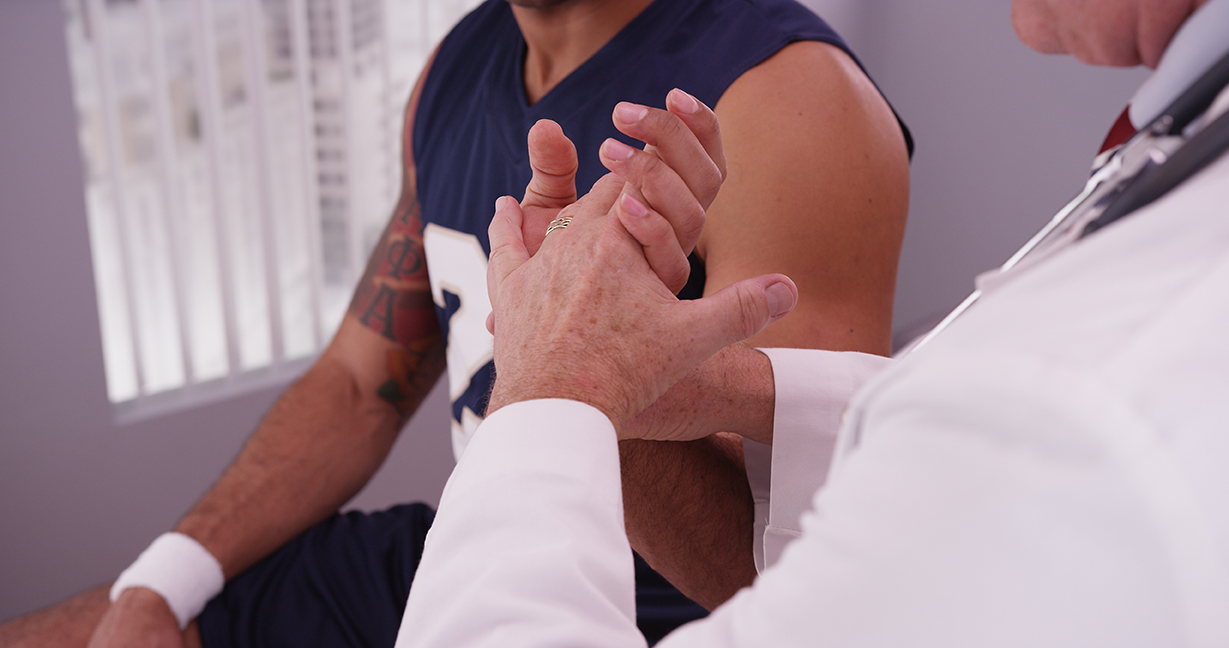With the return to school comes the return to fall sports and, unfortunately, sport-related injury. As Nevada kids settle into cross country running, football, soccer, volleyball, golf, cheerleading and tennis this month, it’s important for the adults in their lives to think of the ways we can keep them playing and pain-free.
The stats are sobering for sport-related youth injury
- One in three children who play a team sport is injured seriously enough to miss practice or games.
- 62 percent of organized sports-related injuries occur during practice rather than in games.
- The most common sports-related injuries among children are sprains, muscle strains, bone or growth plate injuries, repetitive motion injuries and heat-related illness.
- Since the year 2000, there has been a fivefold increase in the number of serious shoulder and elbow injuries among youth baseball and softball players.2
- Among athletes ages 5 to 14: 28 percent of football players, 25 percent of baseball players, 22 percent of soccer players, 15 percent of basketball players, and 12 percent of softball players were injured while playing their respective sports.2
“This time of year, we’re seeing a lot of sprains, fractures, ACL tears and shoulder dislocations,” says Dr. Travis Kieckbusch of Great Basin Orthopaedics. “With fall contact sports like football and soccer, the injuries tend to be more serious.”
Related: Knee injuries on the rise in young athletes
According to the National High School Sports-Related Injury Surveillance Study, during the 2016-2017 school year, there were 1,591,276 high school sports-related injuries, 8 percent of which required surgery, including:3
- Head/face 223,623

- Ankle 121,560
- Knee 100,530
- Hip/thigh/upper leg 44,606
- Hand/wrist 48,524
- Shoulder 39,057
- Lower leg 25,676
- Trunk 27,603
- Arm/elbow 26,983
- Foot 16,359
- Neck 9,615
Related: Rise in volleyball ankle injuries points to large problem-chronic injury in high school athletes
Preventing injury is a team effort
According to the CDC, more than half of all sports injuries in children are preventable. Whether you’re an athlete, a parent of an athlete or a coach, it’s in everyone’s interest to prevent injury.
According to Dr. Kieckbusch, prevention should start before the season. “The most important thing athletes can do to prevent injury is to build and maintain their strength and flexibility in the pre-season,” he says. “Once the season begins, the focus should be on proper technique – for tackling, for running, for kicking.”
Echoing Dr. Kieckbusch are these injury prevention strategies from Safe Kids Worldwide:
Pre-season
- Get a pre-sport physical (many school districts, including Washoe County, require it).
- Do pre-season conditioning to build strength and endurance gradually — injury rates are higher in athletes who have not adequately prepared physically.
- Increase intensity, duration or distance gradually over time, allowing for rest, rebuilding and recovery.
During season
- Warm up and stretch before every practice and game.
- Wear properly fitted protective equipment, such as a helmet, pads, shin guards, shoes and mouthguard.
- Be aware of field/track conditions that can cause injury like holes or obstacles.
- Maintain fitness throughout season.
- Get a good night’s sleep – injuries are more likely in tired athletes.
- Prioritize weekly rest.
Related: Have a tired teen? Look out for sports injuries.
Post-season
- Take time off from one sport to prevent overuse injuries.
- Participate in other sports/cross train to balance muscle development and prevent burnout and become a more well-rounded athlete.
If you have concerns about your child’s training program or athletic activities, it’s best to have a discussion with their coach.
Related story: Single sport specialization can be dangerous for young athletes
Normalize injury discussion
Related: UNR runner returns to top form after hip surgery
If your school-aged athlete has sustained a bone or joint injury during sport, or you suspect that their pain is an injury, consult with an orthopaedic specialist right away. Same week appointments can be scheduled with one of the board-certified surgeons at Great Basin Orthopaedics by calling 775.786.1600.
Sources
2STOP (sports Trauma and Overuse Prevention) website
3National High School Sports-Related Injury Surveillance Study, 2016-2017 School Year